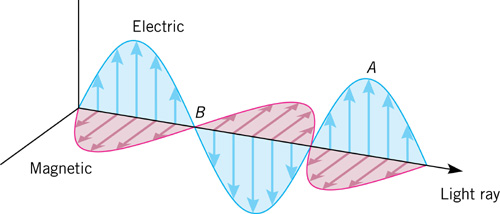
Tues. Apr. 26th
& Thurs. Ap. 28th
Digital Optical
Communications -- see websites listed below
Basic components of digital optical communication system:
Special LInks to get you started:
Fiber Optic CommunicationsSolitons and Amplifiers in Arial-based Optical Communications:
http://www.williamson-labs.com/com-optical.htm
CD Players
DIGITIZATION: Taking an analog signal (a phone message for instance) and converting it to a digital signal in which binary code is used. This means that each amplitude of a signal is converted to a 16 or 24 bit number (16 or 24 0s and 1s representing the amplitude).
Digitization of Sound Waves:
A sound wave is sampled at 44
kHz and at each time interval the height of the wave is measured.
It is then given a value that reflects its
relative amplitude to a zero value. This amplitude is turned into a
binary number.
Binary numbers are
determined by how many powers of 2 you need to make up the particular
amplitude that portion of the sound wave had. So 4 bit binary number
only goes up to a maximum amplitude value of 15 which comes
from 1 x 2^3 + 1 x
2^2 + 1 x 2^1+ 1 x 2^0. Here 4 powers of 2 were used producing a
digital signal of 1111. In CDs, for example, every
amplitude is represented by a 16 or 24 bit number which uses 16 (or 24)
powers of 2 to find the amplitude. This means that the maximum
amplitude can be given a value of over 65000
(3 million).
For some more info:
Once a digital number is assigned to the amplitude, a computer
designs the CD master disc for
pressing the ones we buy. A series of bumps
are put on the master disc which will translate to pits on the final
CD. The CD is made by
pressing the master disc onto the plastic one, coating it with aluminum
and then adding a final coat
of plastic.
The CD:
The CD has pits and lands about 0.5
microns wide on tracks and the tracks are spaced about
1.6 microns apart. The height is around 150 nm or so.
A diode laser beam is
focused onto the CD from below. It makes a spot around 0.8
microns
in diameter (thus the inter track spacing). When the beam is
reflected off the CD, it is sent to a
detector. Here the size of the signal (due to the amplitude of
the light) is used to determine if
there is a pit, a land, or a transition between a pit and a land
occuring. Transitions are marked by a
big change in reflected signal size and thus are given the designation
of a 1while lands and pits
keep the same reflectance and are given the designation of 0.
Playback:
The computer chip reads
the 16 1s and 0s off from the detector and translates them into an
amplitude (this occurs in the Digital to Analog
Converter [DAC]). The amplitudes are put together to form a wave which
is smoothed via a low
pass filter and sent off to the amplifier for the
speakers again as an analog signal.
Website on CD players:
http://electronics.howstuffworks.com/cd.htm
http://electronics.howstuffworks.com/dvd3.htm
Thurs.
Ap. 14th - April 21st
Light's Particle Nature:
Planck was the physicist who derived the theoretical expression which
describes the intensity of light
given off as a function of wavelength for a given temperature black
body radiator. It was based on the
idea that each electron could only give off energy in discrete amounts
rather than any and all energies.
E = h f c = l f = 3 x 108 m /s
In order to describe spectra, scientists had to model the atom with
different energy levels so that light
could be absorbed or emitted in discrete amounts also. The
photons which interact with the atoms have
to have just the right amount of energy to get the electron to jump
from one orbital to another (or one
energy level to another) or the photons are not absorbed or
emitted. This idea came from Einstein
when he studied the photoelectric effect.
How does light act? Light travels from one place to
another as a wave; it interferes with itself, it diffracts going
through an aperture (small hole). It interacts with matter via
absorption and emission as a particle. It reflects off
of surfaces of materials, refracts (or bends) when it enters a material
with a different index of refraction (related to
density), and can be absorbed by the material. This is known as
wave- particle duality of light.
Polarization: What's Behind Those Polaroid Glasses? - Polarizing Squares and Cellophane Sheet
Polarization of light tells us in what direction the light is oscillating or wiggling (remember light as a wave goes up and down in some direction). Linearly polarized light has the electric field oscillating in a particular direction like vertically or horizontally. Lasers often produce polarized light. Light from the sun or a lightbulb is unpolarized. This means that the direction the electric field is oscillating in changes so rapidly over time that you can not deteremine a particular direction of polarization.

A polarizer like the 2 you have in your kits, only allows light that is oscillating in one direction to pass through it.
The polarizing sheets and cellophane are great tools to use to figure out how sunglasses work. Light from the sun strikes the earth. It reflects off everything it encounters. This reflected light is polarized more along one direction than another. The reflected sun light is more horizontally polarized than vertically.Law of Reflection:
The angle of incidence of the light ray is equal to the angle of
reflection of the
ray off a material.

Qincident = Qreflected
Mirrors utilize the law of reflection and lenses utilize the law of refraction.
Flat Mirrors: Provide an image of a person which is upright, on the other side of the mirror, but reversed right to left.
Concave Mirrors: Will focus light. They also make an image which is inverted if you stand beyond the focal point of the mirror but is upright and huge if you stand within the focal point.
Convex Mirrors: Will diverge light (spread it out). They also make images on the opposite side of the mirror which are smaller and upright.
Law of Refraction: Snell's Law.
The index of refraction of two materials and the angle at which a light
ray will propagate through those two media are related through
Snell's Law. A ray with incident angle, Q, traveling through a material with index, n1,
will refract at an angle, f,
in a material of index, n2.

n1 sin Q = n2 sin f

Lenses: There are two main type of lenses -- converging and
diverging -- also known as convex and
concave respectively. When light rays travel through these lenses
they are bent (refracted) because of the
difference in index of refraction of the air and the glass of the
lenses. Upon exiting the lenses, the light rays are
bent away from the normal line and because of the curvature of the
lenses this produces different efffects. For a
converging lens (with convex surfaces), parallel input rays are bent so
that they converge to a single point (thus
the name). For a diverging lens (with concave surfaces), parallel
input rays are bent so that they spread out
away from the lens as the exit (again the beam will diverge).
See this link for more information: link to miniexperiments and other lens info
Eyeballs and Glasses:
Myopic eyes are near
sighted. This means that the lens creates an image too close to the
eye's lens for objects that are far away (so that the image is in front
of the retina). The eyeball is slightly distended.
Correction for such an eyeball requires a diverging lens.
Hyperopic eyes are far
sighted. This means that the lens creates an image too far
from the eye's lens for nearby objects (so that the image is behind the
retina). The eyeball is slightly squashed. Correction for
such a difficulty requires a converging lens.
Contact lenses use
differing indices of refraction as well as curvature to correct for
vision problems, while glasses only use curvature.
Total Internal Reflection -- Fiber
Optics:
Light coming from a high index material like glass
into
a low index material like air undergoes refraction (bending away from
the
normal line) until it reaches a critical angle. Then it
can
no longer exit the glass and is totally reflected within the material
(total
internal reflection). This is how light propagates (travels) down
fibers.
It is sent into the fiber at angles greater than the critical
angle
and thus reflects and bounces its way down the fiber. The fiber
can
be bent as long as it does not become so tightly bent that the angle
for
total internal reflection is lost. Then the light would escape.
Rayleigh Scattering: Short wavelengths
scatter more than long wavelengths.
What makes the sky blue
during
the day?
Why is the sky red at sunrise
and sunset?
What is the color of clouds
and
how is it produced?
Ch. 20 HW
Thurs.
Mar. 31 & TUes. APril 5th
Atoms & Lasers -- Ch. 21
What's coming this semester -- Nanotechnology, optical
communications
-- all based on knowledge of the ATOM



How is light made?
Excitation of electrons to high energy levels is followed by electrons
dropping
to their ground (or un-excited states) This means they give up
energy to make the transition and that energy is
given off in the form of photons. Photons are packets of light
energy that have just the right amount of energy to
shift the electron from one energy level to the other.

Atoms of every element have a different number of
protons, neutrons, and electrons in it. You are
going to look at gases in this experiment. The electrons in the
gas tubes are excited by electrical current
flowing through them. When the electrons give up the extra energy
and go back to their original orbit
around the nucleus, they give off light of a certain color. Only
colors relating to the allowed energies
of the electron are given off. Each element has its own set of
allowed energies for its electrons and the
photons which are emitted form a SPECTRUM which is unique to
that atom. So, like a finger print,
we can identify what element is in the tube by recording what colors of
light are given off by the hot
gas.
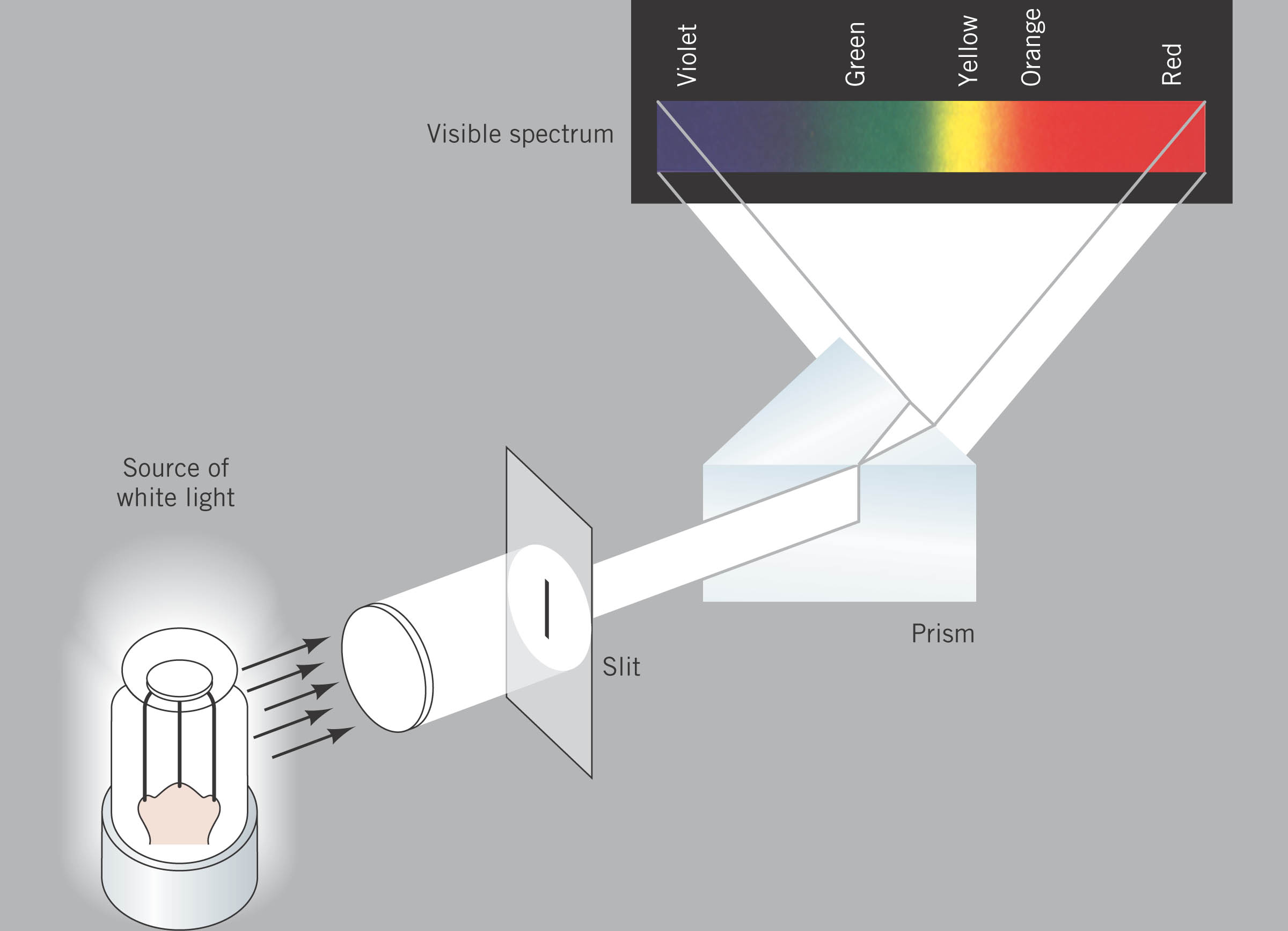
Light's Wave Nature:
Light propagates from one place to another as a wave. It has wave
properties of diffraction,
interference, reflection, and refraction.
Wave Properties:
Wavelength, lambda
Frequency, f
Period, T
T = 1/f
Wavelength * Frequency = Speed of Wave
Speed of light, c
Interference of Waves: Two waves superimpose on each other.
The amplitudes at a given location are added to find the
resulting waveform. Amplitudes
above the equilibrium point are positive and those below the
equilibrium
point are negative.
Light's Particle Nature:
Planck was the physicist who derived the theoretical expression which
describes the intensity of light
given off as a function of wavelength for a given temperature black
body radiator. It was based on the
idea that each electron could only give off energy in discrete amounts
rather than any and all energies.
E = h f c = l f = 3 x 108 m /s
In order to describe spectra, scientists had to model the atom with
different energy levels so that light
could be absorbed or emitted in discrete amounts also. The
photons which interact with the atoms have
to have just the right amount of energy to get the electron to jump
from one orbital to another (or one
energy level to another) or the photons are not absorbed or
emitted. This idea came from Einstein
when he studied the photoelectric effect.

How does light act? Light travels from one place to
another as a wave; it interferes with itself, it diffracts going
through an aperture (small hole). It interacts with matter via
absorption and emission as a particle. It reflects off
of surfaces of materials, refracts (or bends) when it enters a material
with a different index of refraction (related to
density), and can be absorbed by the material. This is known as
wave- particle duality of light.
Laser -- Light Amplification by Stimulated
Emission of
Radiation
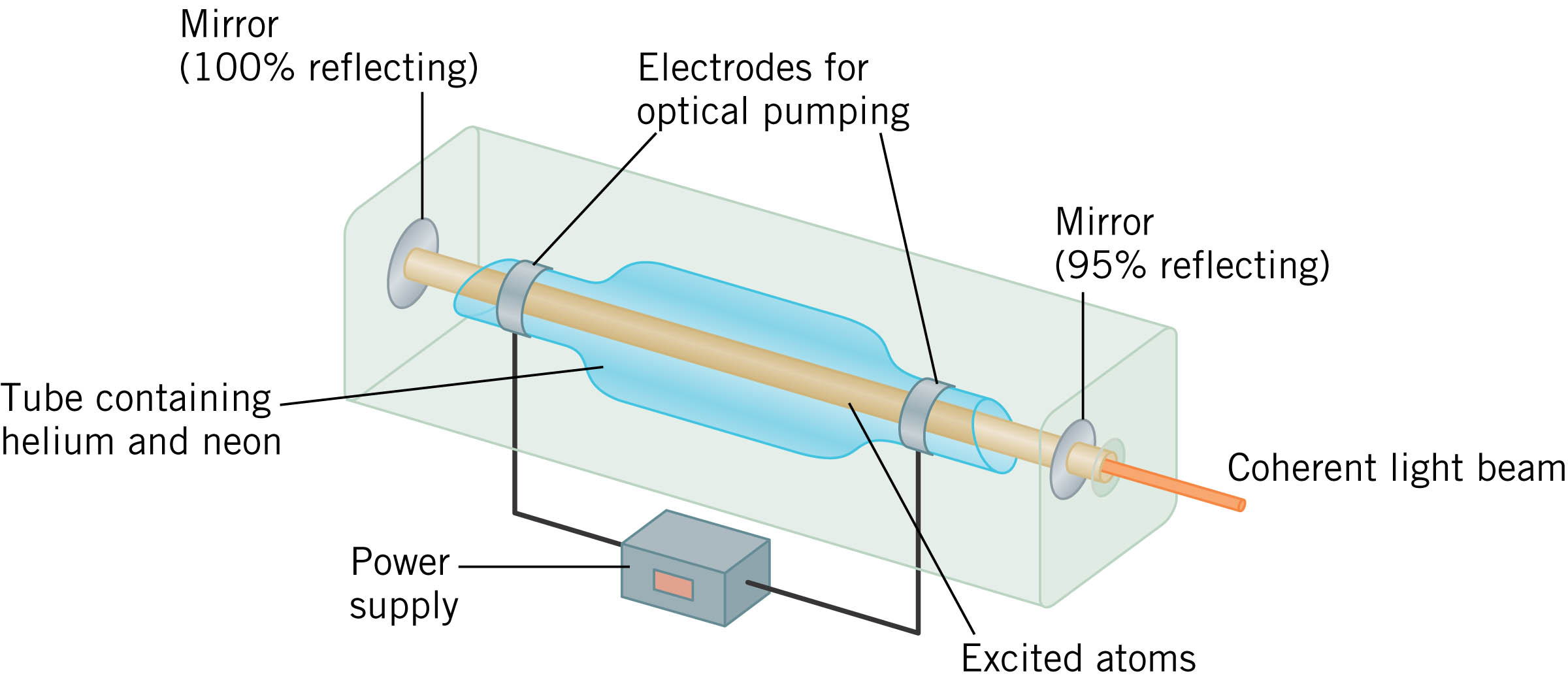
The recipe for a laser & Energy levels for Gain Medium
Recipe:
1. Two mirrors are required. One with 100%
reflectivity and the other with less than 100%
reflectivity.
2. A gain medium -- a material which has an energy level
structure with an upper lasing level that is
long lived to make an inversion (more electrons in the upper
lasing level than the lower lasing level). This is the material
whose electrons are excited in order to make the amplification of the
light. These may be gases (argon, HeNe), solids (YAG),
semiconductors, or liquids (dye lasers).
3. Pump -- a mechanism for pumping electrons in the gain
medium up into the upper lasing level.
This may be done with a flashlamp, electrical current, or another
laser.
4. Spontaneous emission -- spontaneous emission occurs
when an electron in an excited state
jumps back down to a lower energy level giving off a photon. The
photon can go in any direction
and has no particular phase.
5. Spontaneous emission occurs in direction of the mirrors and is caught
between the mirrors --
bouncing back and forth from mirror to mirror, traveling through the
gain medium.
6. Stimulated emission -- stimulated emission occurs when
a photon "tickles" or interacts with an
electron in the upper lasing energy level, stimulating it to emit a
photon and jump to the lower lasing
level. The stimulated photon is emitted in the EXACT same
direction as the initial photon and with
the EXACT same phase. THEREFORE, the total wave (electric field)
that is traveling in the laser
cavity is now increased in amplitude (constructive interference).
7. We have Amplified the light going through the gain
medium when bunches of electrons make this
stimulated transition down to the lower lasing energy level.
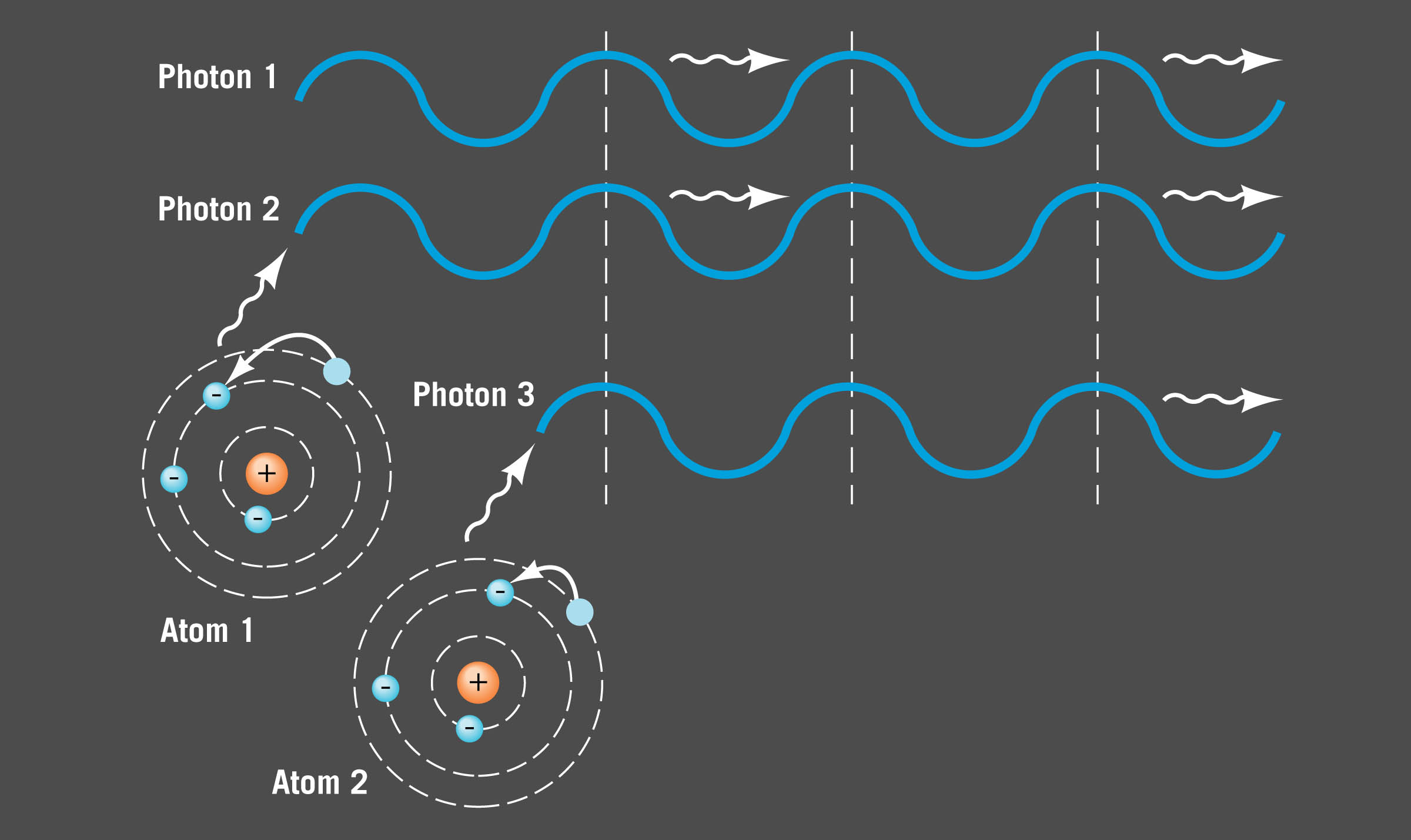
Energy Levels for Gain Medium
The best energy level system is the FOUR level system.
The highest energy level has a short lifetime
(electrons will leave quickly from this state) and the
electrons are excited there by the pump.
The upper lasing energy level is the next lowest in
energy. Electrons quickly drop to the upper
lasing level from the highest level.
The upper lasing level has a long lifetime (electrons will stay
there awhile).
The lower lasing level has a short lifetime (electrons
drop to lowest energy level from here). We
don't want many electrons in the lower lasing level or else they could
absorb light from the cavity and
decrease the total amplitude of the laser light.
Thurs.
Mar. 24 & Tues. Mar. 29
Waves -- Ch. 14
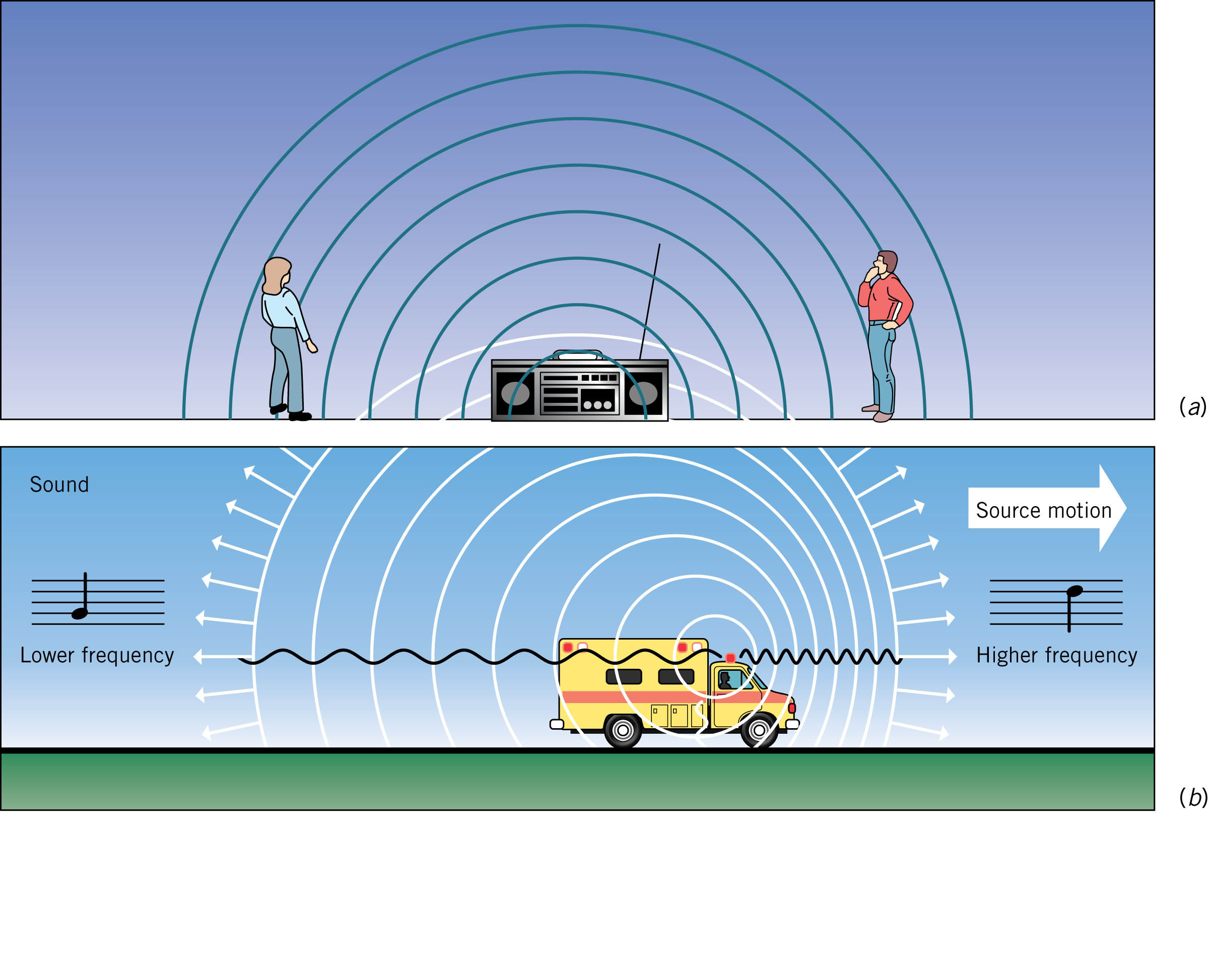
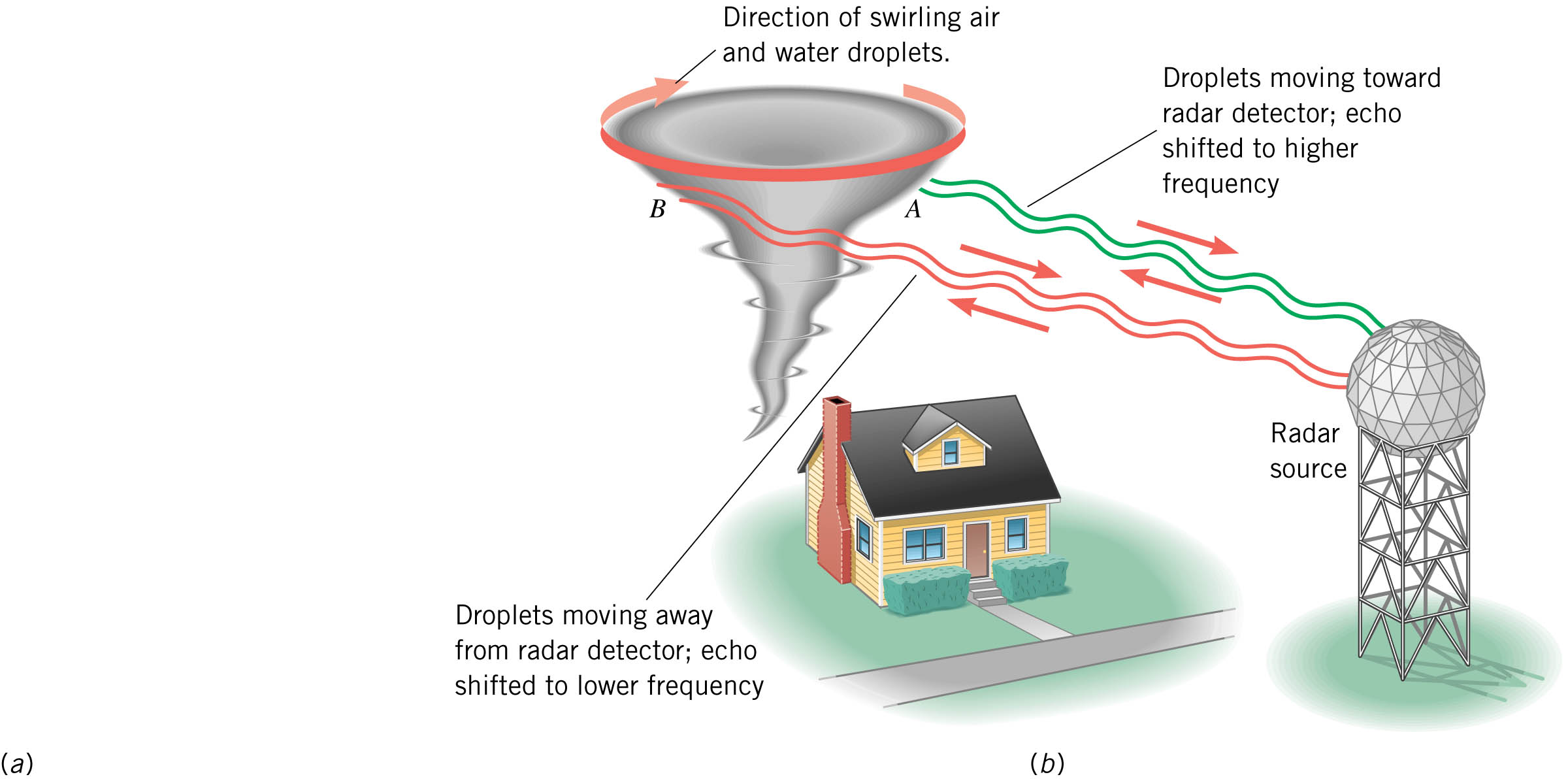
Earthquakes
S waves -- Secondary or Transverse waves
P waves -- Primary or Longitudinal waves'
L waves -- Surface waves which travel along the outer shell of the
earth eminating from epicenter of quake
P waves travel throughout the earth at 1-5 miles per
second, even through the molten core (pressure waves can shift the
material in the longitudinal direction and transfer the energy to the
next portion of the molten outer core).
S waves do not travel through the molten rock (the material is not able
to shift transversely and return to its original position).
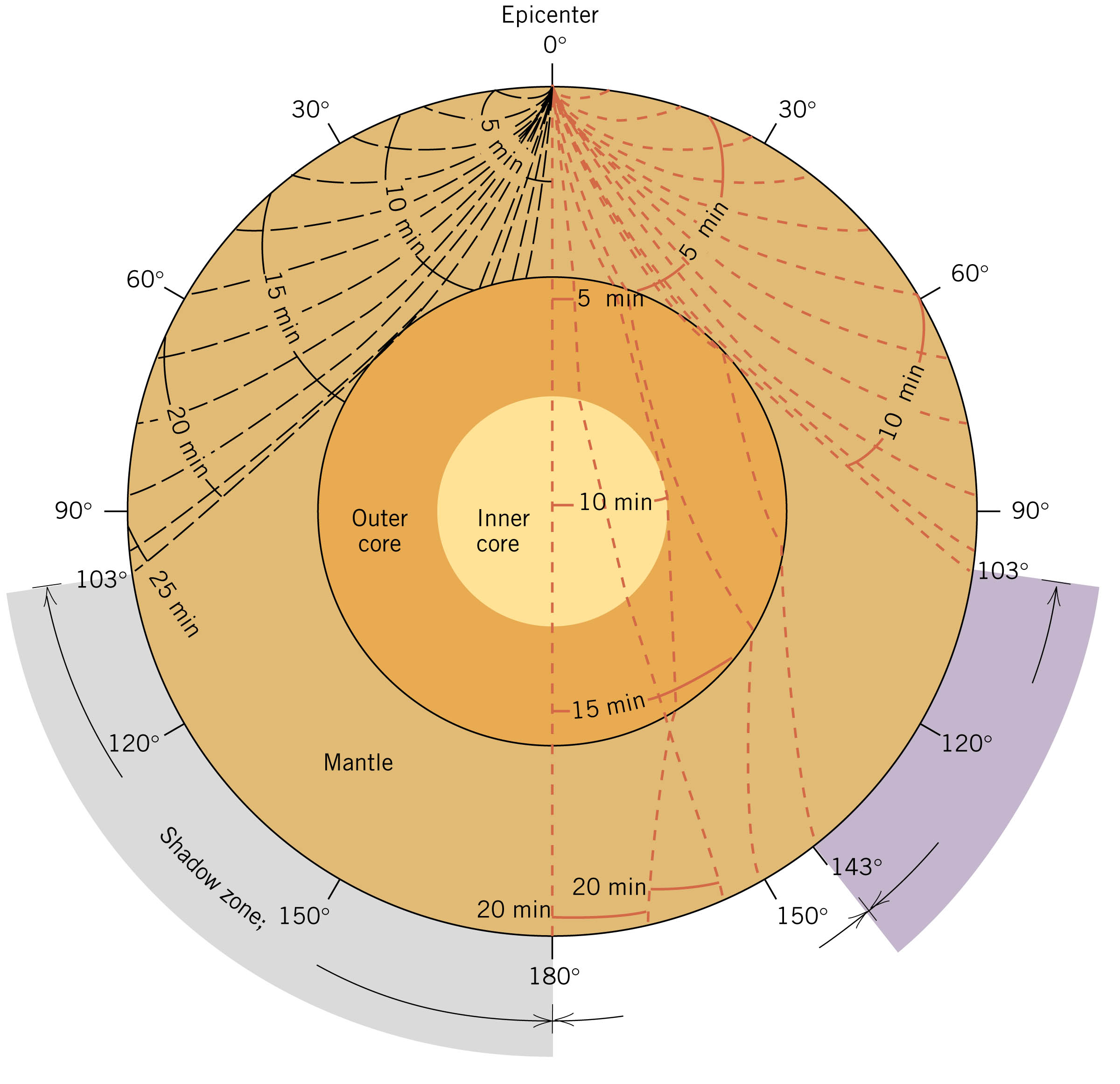
How Earthquakes work:
http://science.howstuffworks.com/earthquake.htm
Earthquake News:
Wave Properties: Indonesia
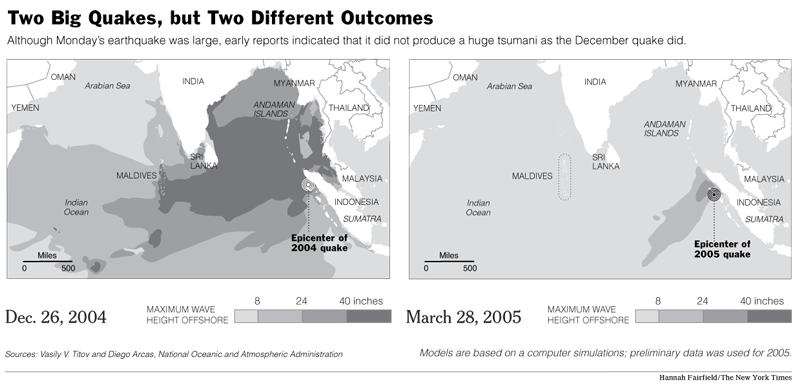
Waves:
Wavelength, lambda
Frequency, f
Period, T
T = l/f
Wavelength * Frequency = Speed of Wave
Speed of light, c
Interference of Waves: Two waves superimpose on each other.
The amplitudes at a given location are added to find the
resulting waveform. Amplitudes
above the equilibrium point are positive and those below the
equilibrium
point are negative.
Thurs. Mar. 10
Ch. 8 -- Energy
Main Ideas:
Power = Work/Time
This describes how quickly you do the work. The quicker it is done the more power is required.
Conservation of Energy states that energy can neither be created nor
destroyed, it
simply changes states (or types of energy).
Conservation of Mechanical Energy states that a system that is
isolated can exhibit
conservation of mechanical energy. That is the total energy
of the system comes from the sum of PE and KE and as the system
evolves:
KE + PE = Constant.
In-Class Demonstrations and Calculations of W and
Conservation of Mechanical Energy.
Examples of Conservation of Energy:
(1) A 1 kg pendulum swings from a starting position of
50
cm above equilibrium. What is its speed at the bottom of its
swing?
(2) The same pendulum swings to 15 cm above equilibrium.
What is its speed there?
Mini Experiment
Bouncing
Balls & Roller
Coaster
Experiments
1. Bouncing Ball: Ball, meter stick
a. Choose a height to start from. hi =
b. Drop ball.
c. Record height ball returns to. hf =
d. Calculate the following quantities: PE before, PE after, Speed ball hits ground with.
e. Is mechanical energy conserved during fall? After return bounce? What happens to the energy of the ball?
f. Choose another height to start from. Then calculate how fast the ball is moving part of the way through the fall (for instance, drop ball from 75 cm and see how fast it is moving at 30 cm)
2. Roller Coaster Problem: Loop-de-loop, car or ball, meter stick
<>a. Make necessary measurements to calculate the following:PE at top, Speed of car/ball at bottom, Speed of car/ball at top of loop
CH. 8 Homework

Tues. March 1
Ch. 8 -- Energy
Main Ideas:
Work: Can be defined in a number of ways. It
is related to changing the state of
motion of an object, changing an objects position, and/or changing its
state of energy.
W = F d = DKE = DPE
F is force, d is distance, KE is kinetic energy, and PE is potential
energy. Applying a force over a distance can increase the
speed of an object or change its potential energy.
KE = 1/2 m v2
Is energy due to motion of an object. Any object in motion
will
exhibit KE. It is a
scalar quantity NOT a vector quantity.
PE = m g h
Is energy due to position above or below a reference height.
PE
can be negative if
work must be done on the object to move it to your reference height.
******* This is
how far the Exam #2 will go *********
For Exam #2: Qs 2,6,9
Ps 1,2,8 --
Plus, Extra Problem: Sister walks by at 0.5 m/s with 2
cookies, If the little brother (20 kg) can catch her, he can have
a cookie. How much work must he do in order to catch her?
Thurs. Feb. 17th & Thurs. FEb 24th


Information on the Neutrino Discovery and Recent
Experiments:
http://ppewww.ph.gla.ac.uk/~psoler/P1X_neutrino_2004_1.pdf
Other Neutrino News: http://www.physorg.com/news346.html
Main Equations:
Linear Momentum p = mv
Newton's Second Law F = (pf - pi) / t
Impulse F Dt = D(mv)
In order
to change an object's momentum, you must apply a force for a period of
time. If you increase the time, you can decrease
the necessary force.
Conservation of Linear Momentum p(before) = p(after)
Fermi Lab: <http://www.fnal.gov:80/>
Go see how conservation of momentum and
energy are used in real life!
Angular Momentum L = mvr
Conservation of Angular Momentum
L(before) = L(after)
Momentum
is a vector quantity defined as p = mv where p and v are
vectors.
Momentum
is a conserved quantity when there are no external forces
acting on a
system.
Elastic
Collisions are ones in which both momentum and kinetic energy
are
conserved.
MINI EXPERIMENT
Main Ideas:
Example problems on conservation of momentum -- group work
Experiment: Momentum Conservation
2 Carts on Track, Stop watches
Estimate the relative masses of the two cars (individually and with
masses on
one).
Draw a picture of the situation.
Estimate the speed of one car through experimentation.
Calculate the speed of 2nd car (or both for inelastic) using
conservation of
momentum.
3 cases:
a) Elastic collision with both cars same mass.
b) Elastic collision with one car has 1 metal bar on it.
c) Inelastic collision with 2nd car intially at rest with metal
bar on it.

Tues. Feb. 15th
Iran
http://story.news.yahoo.com/news?tmpl=story2&u=/ap/20050213/ap_on_re_mi_ea/iran_nuclear
NEW YORK REGION |
February 11,
2005
Antiterror Test to Follow Winds and Determine Airborne Paths
By IAN URBINA
A team of about 50 scientists and emergency planners will release a
harmless
gas to study how air might flow through New York City in the event of a
terrorist attack.
http://www.nytimes.com/2005/02/11/nyregion/11gas.html?ex=1108962000&en=98296dfb1da056ab&ei=5070
TECHNOLOGY | February 10, 2005
Open-Source Practices for Biotechnology
By ANDREW POLLACK
Researchers have devised a method of creating genetically modified
crops that
does not infringe on patents, and they will be making the technique
available
to others to use.
http://www.nytimes.com/2005/02/10/technology/10gene.html?ex=1108962000&en=ba7eb48fe2895b9b&ei=5070
SCIENCE | February 10, 2005
2004 Was Fourth-Warmest Year Ever Recorded
By ANDREW C. REVKIN
Last year was the fourth warmest since systematic temperature
measurements
began around the world in the 19th century, NASA scientists said.
http://www.nytimes.com/2005/02/10/science/10warm.html?ex=1108962000&en=5c23f128b1e0c8f4&ei=5070
TECHNOLOGY | February 12, 2005
Toshiba to Make Chips for Toyota Hybrid Cars - Paper
By REUTERS
TOKYO (Reuters) - Toshiba Corp., the world's fifth-largest chip maker,
will
start supplying Toyota Motor Corp. with microchips that control key
functions
of hybrid cars by the end of the year, a Japanese newspaper said on
Sunday.
http://www.nytimes.com/reuters/technology/tech-tech-japan-toshiba.html?ex=1108962000&en=665b71efce07202b&ei=5070
Astronauts
Testing
Repair Techniques
http://story.news.yahoo.com/news?tmpl=story&u=/ap/20050212/ap_on_sc/space_shuttle
Thurs. Feb. 10

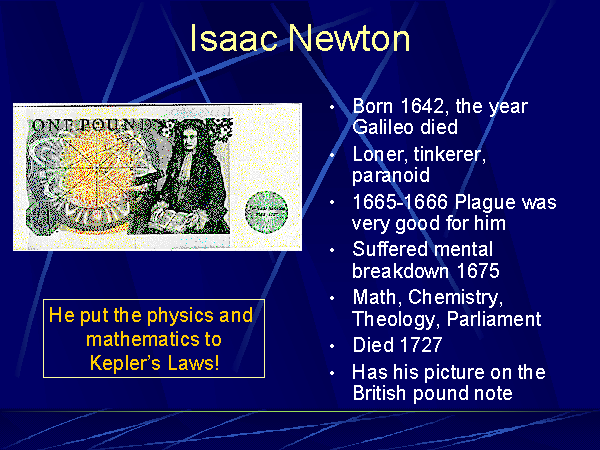

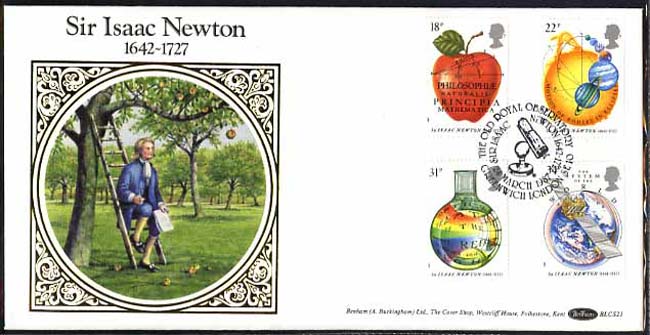
F = ma F = D(mv)/Dt
In Class Work:
Define Newton's 3 Laws
Give examples of each as you would explain them to a friend.
Focus in on Newton's Laws:
1. First and Second Law: The NET force is the important
quantity. If there is a NET
force, there is an acceleration. If there is NO NET force, there
is no acceleration; BUT there can still be motion (constant speed
in straight line).
2. Examples of Places where net force must be considered:
Falling objects and air resistance.
Pushing objects across a surface and friction force.
3. Third Law: Action and Reaction Pairs, Which forces
need to be largest to get an
object to accelerate in a particular direction.
Examples of Newton's Laws -- Net force and terminal velocity
Units of Force, Weight, Mass
CH. 4 HomeworkProjectile Motion:
Motion can be separated into its vertical and horizontal components.
Vertical
motion controlled by gravitational forces and any air resistance that
occurs.
An
object undergoing horizontal motion feels no unbalanced forces (once
thrown/shot
object is
released).
Equations of
motion can be chosen for each type of motion.
Vertical: dy = 1/2 a t2 Vfy = Viy ± at
Horizontal: dx = Vix t
When a ball is thrown up in the air, it experiences vertical motion.
When a ball is rolled across a table, it experiences horizontal motion.
When a ball is thrown across the room, it
experiences
BOTH vertical and
horizontal motion.
Galileo showed that we can look at each of the above motions separately.
Angles for projectile motion -- In class demo/ experiment --
What angle is the best to use for shooting a dart
gun
if one wants to have the dart travel the
farthest in the horizontal direction?
What
angle
gives the longest range for horizontal distance when vertical motion is
ignored? Why?
What angle
gives the longest time of flight in the vertical direction when
horizontal
motion is
ignored? Why?
Combining
these factors -- what do you get?
Physics 101: In-class
Discussion Questions
1.) How do
you define: science and technology?
2.) How do
you feel about science?
3.) What do
you think science might do for you in your lifetime?
4.) How is
science funded?
5.) How is
a good experiment conducted?
6.) How is
science reported?
7.) What new
advances have occurred recently in
science?
8.) What
new advances have occurred recently in technology?


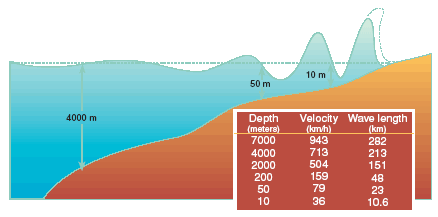
· Survivors in the jungles of the Andaman and Nicobar islands are running out of food and water, Manoranjan Bhakta, the Indian MP who represents the devastated archipelago, said. The tsunami is thought to have killed more than 6,000 people on the islands.
· Kuwait pledged $100m in aid yesterday, 10 times its original pledge.
· A shirt autographed by Manchester United players fetched about £20,000 at a charity auction held by the Hong Kong FA.
· A service honouring tsunami victims was held at Berlin's main cathedral yesterday. Sixty Germans are confirmed dead and more than 700 are missing.
· The singer Gloria Estefan announced plans to raise $100,000 at a concert next month at Donald Trump's exclusive Mar-a-Lago resort in Palm Beach, Florida.
· The US air force helped move 122 homeless cats and one dog whose owners were killed on Phi Phi island, Thailand. The pets were flown to Bangkok


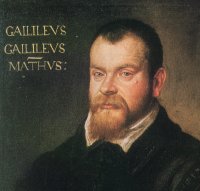
Key Concepts:
Speed -- average and instantaneous
Velocity
Vector Quantities
Thursday, January 20, 2005
CH. 3 --
MOTION
Acceleration - average and due to gravity
Free fall and Air resistance -- Terminal velocity
Terminal Velocity -- Free fall and air resistanceEquipment: Meter sticks & stop watches
Using the above tools and the people in your group. Measure
the
following quantities.
a) Average speed of a person walking at constant pace.
b) Average acceleration of person starting from stop to a run.
c) Your response time when dropping a ruler between fingers
Experimental Procedure: Describe below how you would do
the
above 3 measurements.
How many trials would you do? Why?
Data: Record data below and show calculations of speed,
acceleration, and response time.
Analysis: Are the values you calculated reasonable? why
or why
not?
What are possible sources of error?
Looking back would you change your experiment in any way?
How?
What does each type of graph look like for the following
situations:
Constant Motion -- the distance increases with time (straight line with some slope, the steepness of the line is related to the speed), the speed stays the same regardless of time (straight horizontal line), the acceleration is zero
Acceleration -- The distance increases or decreases with time but the slope changes (as you speed up the slope increases, as you slow down the slope of the curve decreases) thus you see a curved line on distance graph, the speed incresases of decreases with time in a linear fashion (straight line with some slope corresponding to acceleration), the acceleration is a constant at all times (straight horizontal line (non-zero, may be positive or negative))
No Motion -- the distance remains the same regardles of time (straight horizontal liine), all other graphs are at zero (no speed and acceleration)
Changing Acceleration
-- all graphs are more complicated, distance changes with time
in a curved fashion and so does speed, accelearation is changing with
time (straight line at some angle)
Graphing of Scenerios
Ex. Dog runs ambles down street at constant pace, sees a cat and speeds
up
to chase it at a full run, cat ducks into doorway and dog must
decelerate to
a stop.
Ex. Hawk sitting in tree, sees a mouse, dives going faster and
faster to a high speed,
swoops across the field, grabs for mouse but misses,
flies dejectedly at a lower speed
to a fence post, lands on post feeling sorry for itself.
Identify types of motion in scenerio, make 3 qualitative graphs of
the
motion (d vs t, v vs t, and a vs t)
Projectile Motion:
Motion can be separated into its vertical and horizontal components.
Vertical
motion controlled by gravitational forces and any air resistance that
occurs.
An
object undergoing horizontal motion feels no unbalanced forces (once
thrown/shot
object is
released).
Equations of
motion can be chosen for each type of motion.
Vertical: dy = 1/2 a t2 Vfy = Viy ± at
Horizontal: dx = Vix t
When a ball is thrown up in the air, it experiences vertical motion.
When a ball is rolled across a table, it experiences horizontal motion.
When a ball is thrown across the room, it
experiences
BOTH vertical and
horizontal motion.
Galileo showed that we can look at each of the above motions separately.
Angles for projectile motion -- In class demo/ experiment --
What angle is the best to use for shooting a dart
gun
if one wants to have the dart travel the
farthest in the horizontal direction?
What
angle
gives the longest range for horizontal distance when vertical motion is
ignored? Why?
What angle
gives the longest time of flight in the vertical direction when
horizontal
motion is
ignored? Why?
Combining
these factors -- what do you get?
Graphing of Scenerios -- More Practice
Ex. Dog runs ambles down street at constant pace, sees a
cat and speeds up
to chase it at a full run, cat ducks into doorway and dog must
decelerate to
a stop.
Ex. Hawk sitting in tree, sees a mouse, dives going
faster and faster to a high speed,
swoops across the field, grabs for mouse but misses,
flies dejectedly at a lower speed
to a fence post, lands on post feeling sorry for itself.